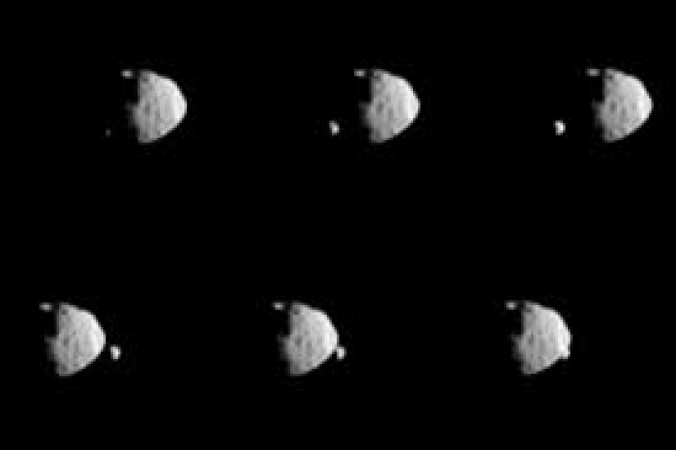
Mars, the fourth planet from the Sun, has captivated human imagination for centuries. Apart from its rusty-red appearance and similarities to Earth, one aspect that has intrigued astronomers and space enthusiasts alike is the presence of moons around this neighboring planet. In this article, we delve into the fascinating topic of Martian moons, their discovery, characteristics, and the mysteries surrounding their origin.
A Brief Overview of Mars
Mars, often referred to as the "Red Planet," is a rocky planet with a thin atmosphere, predominantly composed of carbon dioxide. Its surface is marked by vast deserts, canyons, volcanoes, and polar ice caps, making it one of the most studied objects in the night sky.
Discovery of Martian Moons
The existence of Martian moons was first confirmed by American astronomer Asaph Hall in 1877. Using the powerful telescope at the United States Naval Observatory, he observed two small celestial bodies orbiting Mars and named them Phobos and Deimos after the mythical sons of Ares, the Greek god of war.
The Two Moons of Mars - Phobos and Deimos
Phobos
Phobos, the larger of the two moons, is about 22.2 kilometers (13.8 miles) in diameter. It orbits Mars at a remarkably close distance, being one of the closest moons to its parent planet in the solar system. Phobos is a peculiar moon due to its rapid orbital decay, and scientists predict that it will eventually be torn apart by Mars' gravity in the distant future.
Deimos
Deimos, the smaller and outermost moon, has a diameter of approximately 12.4 kilometers (7.7 miles). It orbits Mars at a greater distance compared to Phobos and has a more stable orbit. Deimos is irregularly shaped and appears to be rich in water ice, similar to some of the icy moons of the outer planets.
Origin and Formation of Martian Moons
The origin of Martian moons is a subject of ongoing research and debate among scientists. The two leading theories propose that Phobos and Deimos could be captured asteroids from the asteroid belt between Mars and Jupiter, or they might have formed from debris ejected during a massive impact on Mars in the distant past.
Moons' Physical Characteristics
Phobos and Deimos differ significantly in their physical characteristics. While Phobos has a heavily cratered surface, Deimos appears smoother. These differences provide valuable insights into the geological history and evolutionary processes of these enigmatic moons.
Orbital Details
Both moons have nearly circular orbits, with Phobos completing its orbit in about 7 hours and 39 minutes, and Deimos taking approximately 30 hours and 18 minutes. Their proximity to Mars means that they play a crucial role in the planet's gravitational interactions with other celestial bodies.
Exploration of Martian Moons
Missions to explore Martian moons have been a subject of interest for space agencies worldwide. Though there have been proposals for missions to study Phobos and Deimos up close, only a few have been launched so far. These missions have provided valuable data about the moons' composition and geology.
Potential for Future Missions
As we continue to explore and understand the Martian system, future missions to these moons hold immense potential. They could serve as stepping stones for further space exploration, aiding in the study of Mars and potentially serving as bases for human missions to the planet.
Theories on the Origin of Martian Moons
The two leading theories on the origin of Phobos and Deimos offer contrasting scenarios. Understanding their origin is crucial as it provides insight into the history of the Martian system and planetary formation in general.
Martian Moon Myths and Legends
Throughout history, Mars and its moons have inspired numerous myths and legends in various cultures. Exploring these tales provides a glimpse into the human fascination with the celestial bodies in the night sky.
Role of Martian Moons in Future Space Exploration
As we plan ambitious space missions beyond our own planet, understanding the role that Martian moons play in space exploration becomes essential. Their potential as scientific and strategic assets makes them intriguing subjects of study. Mars, with its two small companions, Phobos and Deimos, continues to be a captivating destination for scientific exploration and human curiosity. Understanding the origin, characteristics, and potential of these moons not only enriches our knowledge of the Red Planet but also serves as a stepping stone for future space endeavors.
Sidhu Moosewala Murder Case: Sachin Bishnoi Extradited to India from Azerbaijan
Intellectuals Unite: Global Outcry for Release of Writer Badri Seshadri
Brookfield and Reliance Industries Join Forces to Power Australia's Green Future